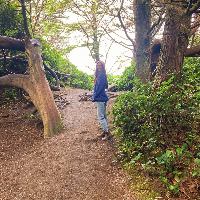Sustainable Fashion Swaps You Need To Make!
Sustainable fashion is a movement and process of fostering change to fashion products and the fashion system towards greater ecological integrity and social justice.
Making eco-conscious decisions in your life doesn't need to be hard or expensive, contrary to common belief. Becoming aware of your impact on the world through clothing, what you eat, and the very basics of how you live can be an alarming thing. For so long we've been lead to believe that new is better but how long can we collectively continue on that path?
Reducing your waste, recycling plastic, switching to reusable grocery bags, and carrying a metal water bottle are fantastic steps but let's face it, there's so much more we could do in our day-to-day lives. There are countless threads of what not to buy if you're looking to live low waste but sometimes too much information can be overwhelming and difficult to digest.
Here are the tips on how you can live not only fashionably but also sustainability.
1. Go For Pre Owned Clothes
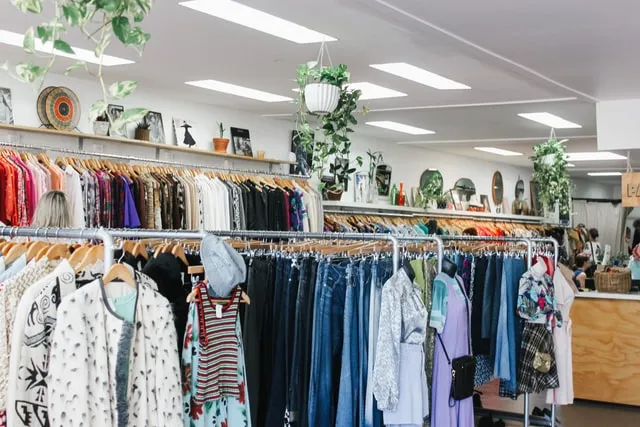
One of my most favorite things to do on the weekend is to go thrift shopping at our local stores. There are usually some great hidden gems in those racks, and if it's a local small business it's most likely to be marked at an amazing price too.
If you're not looking to buy from a store it's a fun idea to talk to your older extended family and see if they have any cute vintage pieces they're looking to sell or give away!
2. Indulge in DIY's
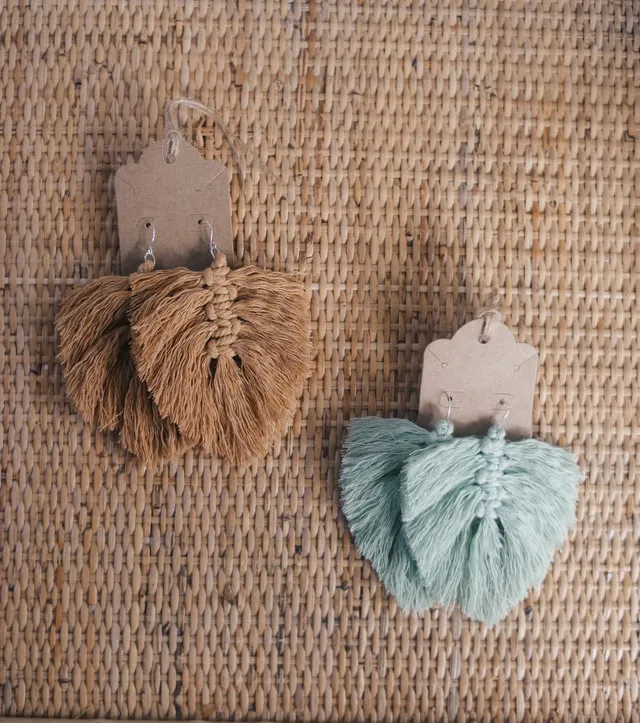
It is a lot easier than you'd think to create your own earrings, bracelets, and necklaces. While it might take some practice, it's super fun and rewarding hobby to take up, if you get good enough you can even sell them at your local market.
Some beginner materials to create your first DIY would be:
- Beads
- Thin Metal Wire
- Earring hooks
- Necklace Clasps
- Jewelry Making Pliers
- Colored Yarn or Twine
If you're unsure of how or where to start, take it easy and begin with some basic earring designs. Here's a short clip of just how simple jewelry making can be!
3. Repair, Don't Replace Your Torn Items In Your Wardrobe
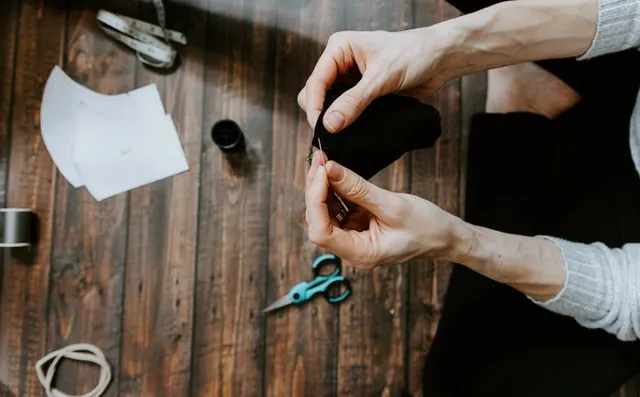
Don't throw away that sock with the hole in it!
Too often when we encounter clothes with tears in them and immediately turn to the garbage bin when really, it would be an easy 3-minute fix. Are your favorite pair of jeans worn out? Sew trendy patches into them or tear them even more to get that distressed look. Have you stained that pristine white t-shirt? No problem! Tie-dye it any color you want and make it an original statement piece.
Below is a video to help you along with some common stitches to fix your clothes!
4. Shop Locally

Of course, reusing and repurposing what you already own is the perfect practice to maintain a sustainable impact on the earth, but sometimes it's necessary to buy new and that's alright!
Shifting from big-box outlet stores to supporting small businesses helps contribute back into your community and overall, betters your shopping experience. When shopping at a chain store it's not guaranteed you'll have a positive experience but at a local store, employees are more likely to genuinely care about your satisfaction and are eager to assist you with anything you need.
Most often with larger corporations, you'll see a lot of exploitation of vulnerable communities, whereas though in smaller businesses the products are usually made and ordered through morally acceptable practices.
5. Stick to Staples Items

Being able to diversely style one piece of clothing over and over again is essential to a semi-minimalist and eco-friendly practice. Using a plain black or white t-shirt is possibly the best starting point if you're brand new to sustainable fashion. A basic black shirt has endless potential for styling, you could wear it tucked into jeans with a black belt, layer it under a thin strap dress, or even layer it over a long sleeve shirt.
By wearing one piece in a plethora of different ways, you'll be able to utilize what you already own and extend the life of your wardrobe.
6. Unfollow Fast Fashion
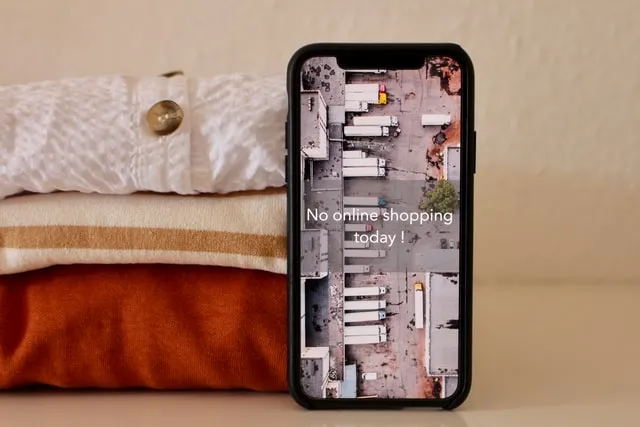
What exactly is fast fashion?
Inexpensive clothing produced rapidly by mass-market retailers in response to the latest trends is called fast fashion.
It's hard to deny that a lot of fast fashion is incredibly affordable and attractive but when it comes down to the facts, it's just not sustainable. The majority of fast fashion brands, similarly to big box outlets, use exploitation as a form of manufacturing their products. Not only that, but the actual clothing, shoes, and jewelry are made from cheap, and often not eco-friendly, materials like polyester, acrylic, and nylon.
Researching and recognizing which brands contribute to the toxicity of fast fashion helps you avoid the fast-growing, consumer mindset of "out with the old, in with the new".
7. Borrow Clothes From Friends and Family
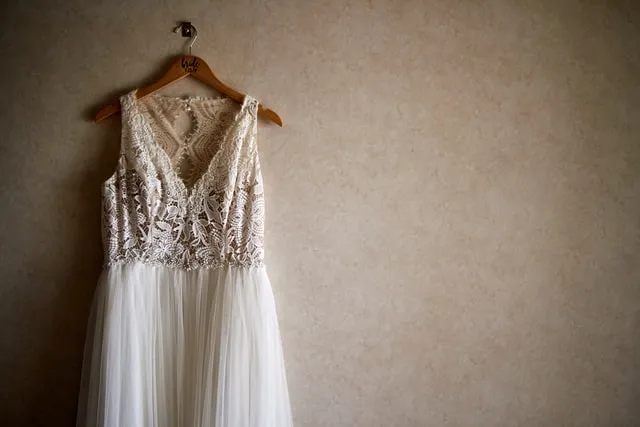
If you've got an event coming up that calls for a higher-class dress code, it's not the best idea to go out on a whim and spend a fortune on an outfit you plan to wear one time. Instead, why not ask your friends and family if they have any elegant attire you could borrow? Not only does this trick save you a lot of money, but it can be a new and fun experience trying on someone else's dresses!
8. Invest in Minimalism When Buying Jewelry

This tip clearly piggybacks off of our past one on staple clothing items, but having minimalist jewelry you can style uniquely can make or break an outfit. Owning band rings, like the one pictured above, simple thin chain necklaces, and silver hoop earrings are all key accessories to the perfect ensemble. Match these with a color-coordinated bag or belt and you'll be looking put together in no time.
If you're finding it hard to make some of these eco-conscious swaps don't worry, everything takes a little bit of time to get used to, just keep in mind that with all the new choices you'll be making you'll be helping the planet along the way. Maybe you've already been doing some simple swaps and hadn't even realized that they were good for the environment, like thrift shopping!
Continuing to prioritize the health of our planet is vital to a successful future, for all of us. Participating in even the most minimal eco-friendly tasks like taking shorter showers, eating less or no meat and dairy, sourcing your food and products locally, are still steps in the right direction.
Opinions and Perspectives
I love how this article breaks down sustainable fashion into practical steps we can all take. I've been thrifting for years and it's amazing what treasures you can find!
Completely agree about minimalist jewelry. I've switched to wearing just a few versatile pieces and it's made such a difference in my wardrobe choices.
The DIY jewelry section caught my attention but honestly I'm a bit intimidated. Has anyone tried making their own accessories before?
Actually yes! I started making simple beaded bracelets last year and now I'm creating all sorts of pieces. It's way easier than you'd think and so satisfying.
The fast fashion point really hit home for me. I used to buy cheap trendy clothes all the time without thinking about the impact.
While I understand the sentiment, not everyone can afford to shop at sustainable fashion brands. Sometimes fast fashion is the only option for people on tight budgets.
That's a fair point about budgets, but that's exactly why thrifting and clothes swapping are such great alternatives. I've built most of my wardrobe from secondhand pieces.
The tip about borrowing clothes for special events is genius! Just borrowed a dress from my sister for a wedding and saved so much money.
Anyone else struggle with letting go of clothes even when they're damaged? I know I should repair them but sometimes it feels easier to just buy new ones.
Learning basic sewing skills has saved me so much money. Just fixed a tear in my favorite jeans instead of replacing them!
I wish the article went into more detail about identifying sustainable brands. It's hard to know which companies are truly ethical.
Shopping locally has really changed my perspective on fashion. The quality is usually better and it feels good supporting small businesses.
The part about staple items is so true. I've learned that having fewer, better quality pieces actually gives me more outfit options.
These are great tips but let's be real, doing all of them at once would be overwhelming. I'm starting with just one or two changes.
My grandmother taught me to sew and it's been such a valuable skill. The article's right about simple repairs taking just minutes.
The tie-dye suggestion for stained clothes is brilliant! Just transformed an old white shirt into something totally unique.
What about shoes? Would love to see some sustainable footwear options included in this list.
I've started following some zero-waste fashion bloggers and it's amazing how creative you can get with a capsule wardrobe.
The article mentions shopping locally, but online thrift stores have been a game changer for me, especially living in a small town.
Love the idea of asking family members for vintage pieces. My aunt gave me some amazing 80s jewelry that's totally back in style now.
Making jewelry sounds fun but where do you source ethical materials? Anyone have suggestions?
I've found some great suppliers on Etsy who focus on sustainable materials. Plus lots of vintage beads and findings at flea markets.
Never thought about the environmental impact of jewelry before. Going minimalist seems like a smart approach.
Really appreciate how this article emphasizes progress over perfection. We don't have to be perfect to make a difference.
The tip about styling one piece multiple ways is key. I've been documenting different outfits with the same items and it's eye-opening.
Anyone else notice how much better quality vintage clothes tend to be? They really don't make things like they used to.
True but finding the right size in vintage can be tricky. I've had to learn basic alterations to make pieces work for me.
The point about unfollowing fast fashion brands is important. Those constant sale notifications were making me buy things I didn't need.
I started a clothing swap group with friends and it's been amazing. We meet every season to exchange pieces we're tired of.
Would love more specific recommendations for sustainable fabric choices. What should we look for when shopping?
